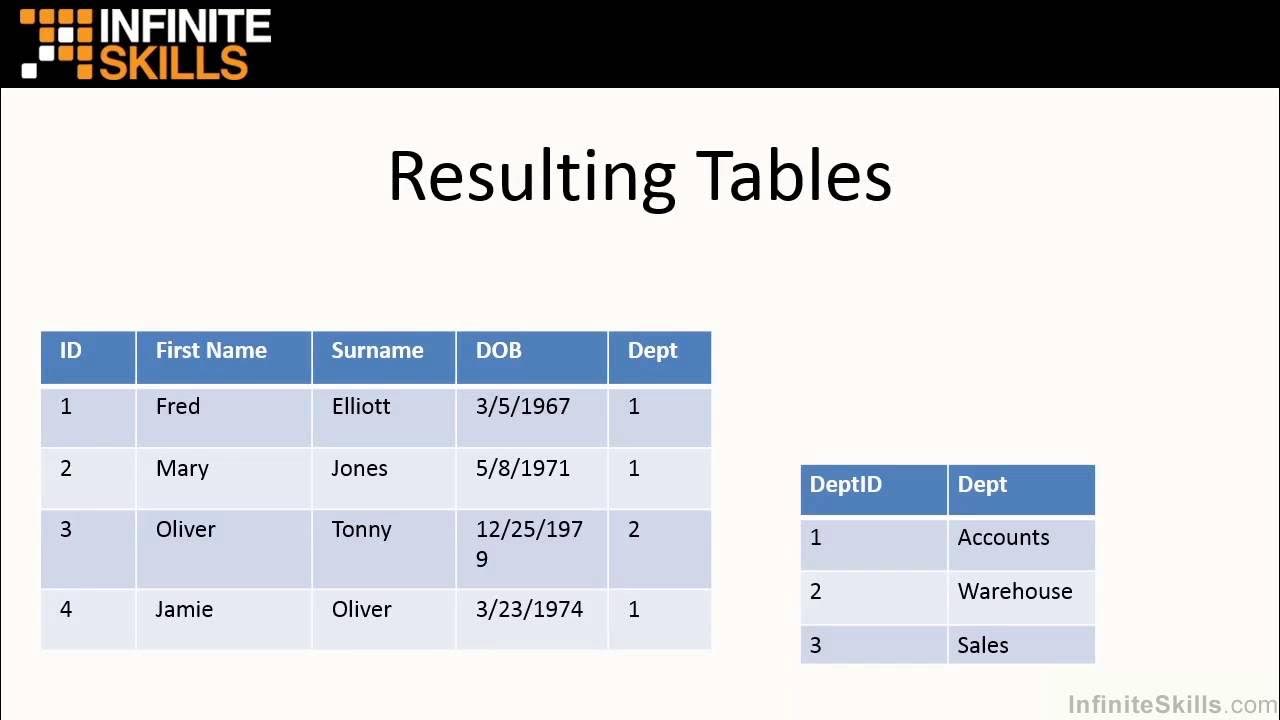Relational Model Concepts - Databases and SQL for Data Science by IBM #11
Summary
TLDRThis video provides an introduction to the relational model of data, explaining its origins, core concepts, and key terminology. Viewers learn that the relational model, proposed in 1970, is built on mathematical principles, specifically sets and relations. The video covers the fundamental concepts of relation, relational schema, and relational instance, and defines terms such as degree (the number of columns) and cardinality (the number of rows). By the end of the video, viewers will be able to define these relational terms and explain the differences between relational schema and relational instance.
Takeaways
- 😀 The relational model was first proposed in 1970 and is based on mathematical concepts like relations and sets.
- 😀 A relation in the relational model is essentially a table, made up of rows and columns.
- 😀 A set, a foundational concept in the relational model, is an unordered collection of distinct elements.
- 😀 A relational database is made up of a set of relations, with each relation being a table.
- 😀 A relational schema defines the name of a relation and the attributes within it, such as Author_ID or Lastname.
- 😀 The relational schema also specifies the data types of attributes, such as 'char' and 'varchar'.
- 😀 A relational instance refers to a specific table with its attributes (columns) and tuples (rows).
- 😀 Degree refers to the number of attributes (columns) in a relation, such as six in the example provided.
- 😀 Cardinality refers to the number of tuples (rows) in a relation, which is five in the provided example.
- 😀 The relational model uses two main parts: relational schema (structure) and relational instance (data).
- 😀 By the end of the video, viewers should be able to define key relational terms like relation, degree, cardinality, and understand the difference between relational schema and relational instance.
Q & A
What is the relational model, and who proposed it?
-The relational model is a data model based on mathematical concepts and was first proposed in 1970. It is grounded in the idea of relations and sets.
What is a 'relation' in the context of the relational model?
-A 'relation' in the relational model is a mathematical concept equivalent to a table in a database. It consists of rows (tuples) and columns (attributes).
What is a 'set' in the relational model?
-In the relational model, a 'set' refers to an unordered collection of distinct elements that do not contain duplicates, and all elements are of the same type.
What does the term 'relational database' mean?
-A relational database is a collection of relations (tables) where each relation stores data in the form of rows and columns, following the relational model.
What are the two main components of a relation in the relational model?
-A relation in the relational model is made up of two components: the relational schema and the relational instance.
What is the role of a relational schema?
-A relational schema defines the structure of a relation by specifying the name of the relation and the attributes (fields) it contains, along with their data types.
What is a relational instance, and how is it different from a relational schema?
-A relational instance refers to the actual data stored in a table, consisting of rows (tuples) and columns (attributes). It differs from the relational schema, which is the definition or structure of the table.
What is meant by the 'degree' of a relation?
-The degree of a relation refers to the number of attributes (columns) it contains. For example, if a relation has six columns, its degree is 6.
What does 'cardinality' refer to in a relational model?
-Cardinality refers to the number of tuples (rows) in a relation. For example, if a relation contains five rows, its cardinality is 5.
How are 'degree' and 'cardinality' different from each other?
-Degree refers to the number of columns (attributes) in a relation, while cardinality refers to the number of rows (tuples) in a relation. Degree is about structure, and cardinality is about the amount of data.
Outlines

This section is available to paid users only. Please upgrade to access this part.
Upgrade NowMindmap

This section is available to paid users only. Please upgrade to access this part.
Upgrade NowKeywords

This section is available to paid users only. Please upgrade to access this part.
Upgrade NowHighlights

This section is available to paid users only. Please upgrade to access this part.
Upgrade NowTranscripts

This section is available to paid users only. Please upgrade to access this part.
Upgrade NowBrowse More Related Video

RELATIONAL DATABASE | Sistem Basis Data

SQL Tutorial | Relational Databases and Key Terms Explained

SQL managed services

Introduction to ML: What is Machine Learning? | ML for Beginners

50. OCR A Level (H046-H446) SLR10 - 1.3 Introduction to database concepts

SQL Basics for Beginners | Learn SQL | SQL Tutorial for Beginners | Edureka
5.0 / 5 (0 votes)